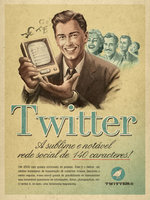The Line Between Advertising And Editorial is Gone. Is That A Good Thing?
It's funny how quickly things change. When Adrants launched in 2001 and then became a business in 2003, things were still pretty traditional. Banners ruled. DSP stood for digital signal processing (not demand-side publishing). RTB was something Wall Street did. There was no social media. There was no social business. There was no content marketing. And there were certainly no brands producing their own content. Because God forbid the line between advertising and editorial be crossed.
See PayPerPost. We trashed them and CEO Ted Murphy. But times change and what was once unacceptable is now, mostly the norm. We're good friends with Ted Murphy now and, like many other publications, now sell "content sponsorship" deals all the time. Even Adrants, which always prided itself on cutting through the bullshit and keeping the ad industry honest now straddles the line.
Today, that line that used to exist between advertising and editorial is becoming ever more difficult to see. It's not as if "pure" editorial was never before influenced by marketers intent on insuring their message play out in as many places as possible. It's just that the "vetting" that used to exist between marketer and consumer has mostly disappeared.
This is not necessarily a bad thing. Marketers have become smarter and the good ones think more like publishers. They know interesting content can reel in readership and, potentially, customers. They also know that if they stray too far into the land of the hard sell, they'll be quickly dumped by their readers. It's fine line. A delicate balance.
So much has change and yet, at the same time, so little really has. Content marketing? Just a fancy new name for custom publishing. Social media? New nomenclature for what is basically word of mouth. Oh yes, the internet has fueled these changes but at the core it's just a better pipe. A larger conduit through which marketers can sling their messages. And, yes, while it has allowed for a shift from one way communication between marketer and consumer to full on two way, how many brands are truly interesting enough to warrant conversation with consumers?
The Huffington Post hopes there are enough to support a new offering that aims to help brands create brand-related, lifestyle content. Gawker Media is doing the same moving an editor over to the business side where he will help brands develop sponsored content for Gawker Media sites.
Blurry is a good word to describe what's happening in the marketing space today. What was once cut and dry is now an ever moving landscape of change. Don Draper would be drowning. Or he would be telling us to stop letting all these shiny new toys distract us and focus on what was...and still is...the most important thing in advertising; the big idea.


